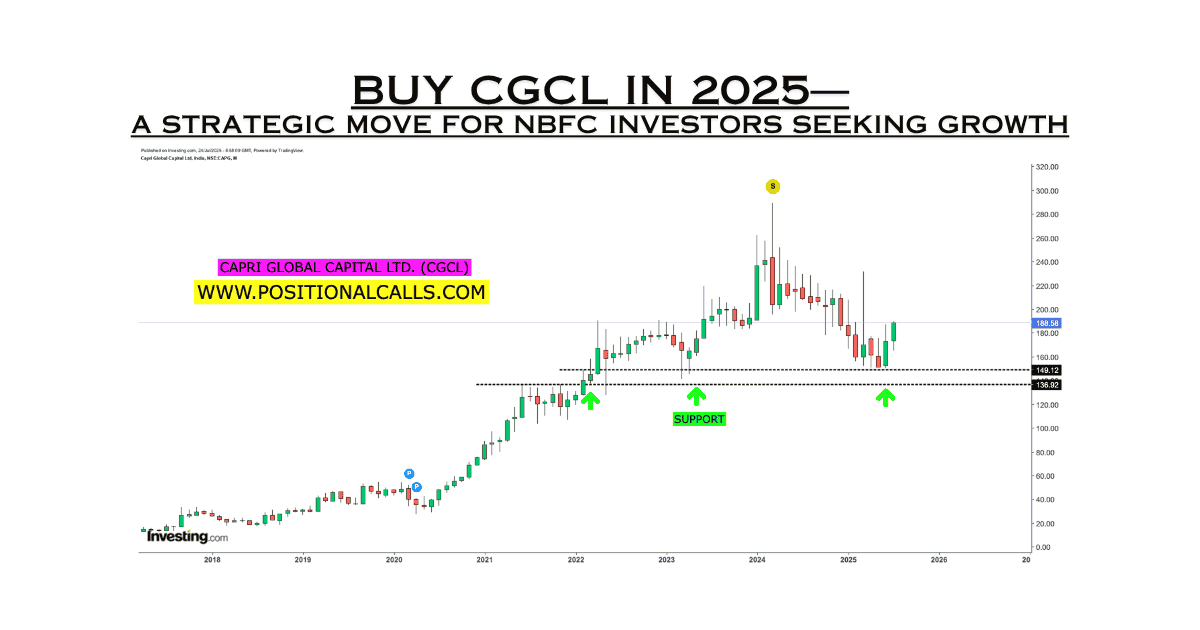
Vodafone Idea Q4 Results: A Deep Dive into Net Loss, ARPU, AGR Dues, and Share Price Volatility—What Investors Need to Know
Key Takeaways for High-Value Investors and Market Analysts:
- Significant Net Loss Persists:
Vodafone Idea (Vi) continues to grapple with substantial quarterly losses, raising critical questions about its long-term financial viability and the efficacy of ongoing capital expenditure. - ARPU Stagnation—A Critical Indicator:
While marginal improvements in Average Revenue Per User (ARPU) are anticipated, Vi’s ARPU remains significantly lower than its formidable rivals, Reliance Jio and Bharti Airtel, highlighting intense competitive pressures and the urgent need for tariff rationalization. - AGR Dues—The Ever-Present Sword of Damocles:
The towering Adjusted Gross Revenue (AGR) liabilities, coupled with the Supreme Court’s recent dismissal of Vi’s plea for relief, cast a long shadow over the company’s balance sheet and its ability to secure crucial financial backing. - Share Price Reaction—Navigating Extreme Volatility:
Vi’s stock remains highly sensitive to financial news and regulatory developments, presenting both speculative opportunities and substantial risks for savvy market participants. - Fundraising Imperative & 5G Rollout Challenges:
The ongoing efforts to raise significant capital are paramount for network expansion, particularly for a competitive 5G rollout, which is crucial for attracting and retaining high-value subscribers.
The Indian telecommunications sector, a hyper-competitive battleground dominated by a few behemoths, continues to present a challenging landscape for players like Vodafone Idea (Vi). As the company prepares to announce its Q4 FY25 results on May 30, 2025, market participants and financial analysts are intensely scrutinizing every facet of its performance. This in-depth analysis delves into the critical factors impacting Vi’s financial health, specifically focusing on its persistent net losses, the trajectory of its Average Revenue Per User (ARPU), the formidable burden of Adjusted Gross Revenue (AGR) dues, and the resultant impact on its share price. Understanding these interconnected elements is crucial for discerning the true investment potential and inherent risks associated with this telecom major.
Vodafone Idea Q4 Results: Persistent Net Loss: A Deep-Seated Financial Challenge
Vodafone Idea has consistently reported staggering net losses, quarter after quarter, a stark reminder of the immense financial pressures it faces. For Q4 FY25, analysts broadly anticipate a net loss exceeding ₹7,000 crore, potentially even widening from the previous quarter’s ₹6,609 crore loss. While some estimates suggest a slight year-on-year narrowing compared to Q4 FY24’s ₹7,675 crore loss, the sheer magnitude of these deficits underscores a fundamental issue: Vi’s revenue generation struggles to offset its colossal operating and financial obligations.
Several key drivers contribute to this chronic unprofitability:
- Intense Competition and Price Wars:
The Indian telecom market is characterized by aggressive pricing strategies, particularly from Reliance Jio and Bharti Airtel, which have consistently offered highly competitive tariffs and extensive network coverage. This intense competition has limited Vi’s ability to significantly increase tariffs and expand its subscriber base, directly impacting its top-line growth. - Subscriber Churn and Declining User Base:
Vi continues to battle substantial subscriber churn, particularly among lower-end revenue users. While there has been a moderation in subscriber loss compared to previous quarters, the net decline in overall subscribers directly translates to diminished revenue streams. This ongoing erosion of its customer base is a critical concern, as a larger subscriber base is fundamental for scale and profitability in the telecom industry. - High Operating Costs and Network Expansion: Despite the financial constraints, Vi is compelled to invest heavily in its network infrastructure to remain competitive. This includes upgrading its 4G network and, crucially, rolling out 5G services. These capital expenditures, while necessary for future growth, significantly contribute to operating costs and weigh down profitability in the short to medium term. Analysts project increased capital expenditure in the latter half of FY25, particularly in Q4, due to accelerated 5G deployments.
- Depreciation and Amortization Charges:
The extensive network assets and spectrum licenses incur substantial depreciation and amortization charges, which are non-cash expenses but significantly impact the reported net loss. - Interest Expenses:
A colossal debt burden, exacerbated by the AGR dues, leads to significant interest expenses, further eroding the company’s bottom line.
Vodafone Idea Q4 Results: ARPU Stagnation: The Revenue Headwind
Average Revenue Per User (ARPU) is a pivotal metric in the telecom sector, indicating the health and profitability of a company’s subscriber base. For Vodafone Idea, ARPU has largely remained stagnant, hovering around ₹163-₹164 in Q4 FY25. This figure pales in comparison to its rivals, with Bharti Airtel reporting an ARPU of ₹245 and Reliance Jio at ₹206.2 in the same period.
Several factors contribute to Vi’s subdued ARPU:
- Lack of Significant Tariff Hikes:
While the company implemented a tariff hike in July 2024, its full effect was reflected by the end of Q3 FY25. Without further substantial price increases, ARPU growth is likely to remain muted. The highly competitive nature of the Indian market makes aggressive tariff hikes a risky proposition, as they could lead to further subscriber churn. - Lower-Value Subscriber Mix:
The persistent loss of higher-value subscribers and the retention of lower-end users contribute to a diluted ARPU. While there’s a reported gain in mobile broadband (MBB) users, the overall subscriber mix still leans toward lower-paying customers. - Fewer Network Usage Days:
The Q4 period, with fewer days, can also marginally impact ARPU sequentially, even if the underlying per-day usage remains stable.
Increasing ARPU is absolutely critical for Vi’s long-term sustainability. It is a direct indicator of customer stickiness, value realization from services, and ultimately, the ability to generate sufficient operational cash flow to service its debts and invest in future technologies.
Vodafone Idea Q4 Results: AGR Dues: The Unrelenting Financial Albatross
The Adjusted Gross Revenue (AGR) dispute remains perhaps the most significant and crippling financial burden for Vodafone Idea. The Supreme Court’s recent dismissal of Vi’s plea for a waiver on interest, penalties, and interest on penalties related to AGR dues has extinguished a glimmer of hope for substantial financial relief.
Key aspects of the AGR challenge:
- Enormous Liability:
As of March end, Vi’s AGR liability stands at a staggering ₹83,400 crore. This monumental sum includes principal, interest, penalties, and interest on penalties. - Imminent Payment Schedule:
The four-year moratorium on AGR payments is set to expire in September 2025. Starting March 31, 2026, Vodafone Idea will face annual installments of approximately ₹18,000 crore for the next six years. - Cash Flow Mismatch:
Critically, Vi’s annual operational cash generation in the past three years has been in the range of ₹8,400-₹9,200 crore. This stark mismatch between its cash generation capabilities and its impending AGR payment obligations highlights an existential threat. Without substantial external funding or further government intervention, meeting these payments appears unsustainable. - Impact on Bank Funding:
The unresolved AGR issue has made it exceedingly difficult for Vi to secure additional bank funding, estimated at ₹25,000 crore, which is vital for its network expansion and operational needs. Banks are reluctant to lend without greater clarity and resolution regarding the AGR liability. - Government’s Equity Conversion:
While the government has provided some reprieve by converting portions of statutory dues into equity, raising its stake in Vi to 49%, this measure, while significant, does not eliminate the underlying debt burden or the future payment obligations. It merely shifts the ownership structure and provides a lifeline, rather than a permanent solution to the financial strain.
The AGR dues are a constant drain on Vi’s resources, diverting capital that could otherwise be invested in network upgrades, 5G deployment, and customer acquisition. The recent Supreme Court decision amplifies the pressure on the company to find alternative financial solutions or secure further government support.
Vodafone Idea Q4 Results: Share Price Reaction: A Barometer of Investor Sentiment
Vodafone Idea’s share price is a highly sensitive barometer of investor sentiment, reacting sharply to every piece of financial news, regulatory development, and market rumor. Ahead of the Q4 results, the stock has shown some volatility, with analysts predicting a weak performance due to continued subscriber churn and the ongoing AGR pressures.
Key observations regarding share price dynamics:
- Downward Trend YTD:
The stock has declined by approximately 7% year-to-date in 2025, reflecting persistent concerns about its financial health and long-term viability. - Sharp Swings on News:
The share price experienced a temporary jump in April following the government’s decision to convert a part of its dues into equity. However, this surge was short-lived, with the stock plunging after the Supreme Court’s AGR ruling. This demonstrates the market’s immediate and strong reaction to news directly impacting Vi’s debt burden and liquidity. - Technical Weakness:
Technical analysts largely view Vodafone Idea’s stock as weak, characterized by lower highs and lower lows, suggesting a bearish trend. Key support levels are being watched closely, and any short-term bounces are often met with renewed selling pressure. - Fundraising Catalysts:
Any concrete progress on fundraising initiatives—whether through a rights issue, Further Public Offer (FPO), private placement, or Qualified Institutional Placement (QIP)—could act as a significant positive catalyst for the share price. However, the market remains cautious, awaiting tangible outcomes from these deliberations. - Competitive Landscape Impact:
The strong performance and aggressive expansion of rivals like Reliance Jio and Bharti Airtel also indirectly pressure Vi’s valuation, as investors weigh the competitive risks.
For investors, Vi’s stock represents a high-risk, high-reward proposition. While the potential for a turnaround exists if significant funding is secured and operational improvements materialize, the current financial distress and regulatory overhang make it a highly speculative investment.
Vodafone Idea Q4 Results: The Path Forward: Fundraising and 5G Imperatives
Vodafone Idea’s survival and future growth hinge on its ability to execute a multi-pronged strategy centred around
- Aggressive Fundraising:
The company’s board is actively considering various fundraising proposals. A successful capital infusion is not merely about debt servicing but also about injecting vital funds for network expansion, technological upgrades, and competitive 5G rollout. The recent FPO indicated a positive reception, but more capital may be required. - Expedited 5G Rollout:
While lagging behind its competitors, Vi has initiated its 5G rollout in key cities like Mumbai, Chandigarh, Patna, and Delhi NCR. The stated target of expanding 5G services to all 17 priority circles by August 2025 is ambitious and critical. A robust 5G network is essential for attracting and retaining high-ARPU subscribers, offering advanced services, and remaining relevant in the rapidly evolving digital ecosystem. - Tariff Rationalisation:
Ultimately, for ARPU to see substantial improvement, a broader industry-wide tariff hike or a significant increase in Vi’s tariffs, without triggering massive churn, will be necessary. This remains a sensitive issue, given the intense competition. - Operational Efficiencies:
Beyond fundraising and network investment, Vi must continue to focus on streamlining operations, reducing costs, and improving service delivery to enhance customer experience and minimize churn. - Government Support and Policy Intervention:
Given the strategic importance of a three-player telecom market for healthy competition, further government support, potentially through continued moratoriums or other relief measures on AGR dues, could prove instrumental in Vi’s survival. The Supreme Court’s stance emphasizes the need for policy-level solutions rather than judicial intervention.
READ MORE: Scoda Tubes IPO: Investment Opportunity or High-Risk Bet?
Conclusion: A Precarious Balance
Vodafone Idea’s Q4 FY25 results will undoubtedly provide a critical snapshot of its ongoing financial struggles. The persistent net loss, coupled with stagnant ARPU and the looming shadow of AGR dues, paints a challenging picture. The share price reaction will reflect the market’s immediate assessment of these figures and any forward-looking statements from the management regarding fundraising and strategic initiatives.
For investors, the immediate future of Vodafone Idea remains precariously balanced. While the government’s stake conversion has provided some breathing room and the company is actively pursuing fundraising, the road to sustainable profitability is long and arduous. The ability to significantly boost ARPU, effectively roll out 5G, and manage its immense debt burden will be the ultimate determinants of Vodafone Idea’s ability to transition from a struggling entity to a truly competitive force in the dynamic Indian telecom market. High-value investors and analysts will be watching closely for concrete steps and tangible progress on these critical fronts.







